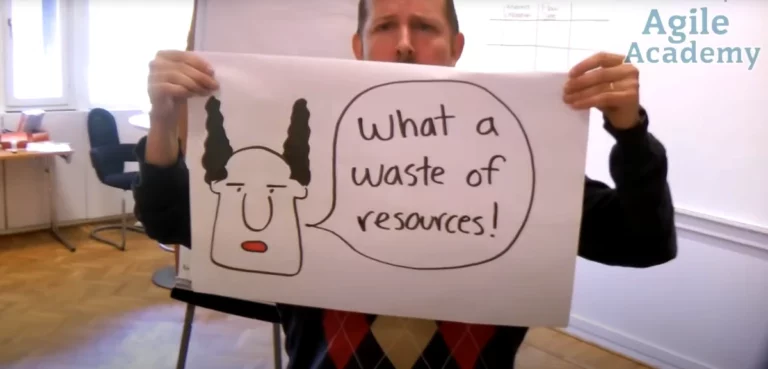The Misuse and Abuse of Story Points
Are you a Story Point?
Have you been misused and abused?
Know that you are not alone.
Call 1-800-STORY-POINT right now.
Operator: 1-800-STORY-POINT, please state your concern.
Story Point X: Hi, yes, I would like to report that my colleagues and I have been misused and abused.
Operator: I see. Know that you are not alone. We are working on full capacity, round the clock.
Story Point X: Thank you for your service.
Operator: Please tell me what happened exactly so we can give the best advice.
Story Point X: Sure. Me and my colleagues are working in this tech company. The Agile teams thrived on collaboration and flexibility. We Story Points were introduced to help these teams estimate and manage their workload effectively. As you know, we were designed to be a measure of effort and complexity, not time, allowing teams to focus on delivering value rather than pressed into meeting strict deadlines.
Operator: Yes, I’m aware. What happened then?
Story Point X: Initially, the Agile teams used us well. Teams held planning poker sessions, discussed the complexities of their tasks, and reached a consensus on the effort required. They used us to plan sprints, aiming to deliver a set amount of work within each iteration. The morale of the teams was pretty good and productivity seemed to be on the rise. Our morale was high too. We were grateful that we could help really.
Operator: But then something changed?
Story Point X: Yeah! As the company’s leadership saw the benefits of us Story Points in facilitating project planning, they began to look more closely at us. Executives and managers, eager for more granular control and predictability, started to use us to measure team performance. They began to equate higher Story Points with higher productivity, assuming that more of us points completed meant better performance.
Operator: Where have I heard this before?
Story Point X: Under this new regime, teams felt increasing pressure to “produce” more Story Points. Managers set targets for Story Points completed per sprint, believing that this would drive efficiency. They started using these targets to compare teams and even individual team members.
When we were once a tool for estimation and planning we turned into a metric for evaluation.
Operator: Quite the shift and Mademoiselle Velocity knows a thing or two about being an evaluation metric too.
Story Point X: Indeed. We Story Points are basically feeding Velocity’s misery. Anyway, our misuse and abuse led to several negative consequences. I’ve documented them meticulously.
Operator: Can I make a wild guess?
Story Point X: Sure
Operator:
- Inflation of Estimates: To meet targets and appear more productive, teams began inflating their Story Point estimates. What used to be for example a 3-point story now became a 5-point story.
- Focus on Quantity Over Quality: Teams prioritized completing more Story Points over the quality and value of their work. This led to technical debt and lower-quality deliverables.
- Reduced Collaboration: Team members, wary of being judged on their Story Point output, became less willing to help each other. Collaboration suffered as individuals focused on their own tasks to ensure they met their targets.
- Decline in Morale: The pressure to meet Story Point targets led to stress and burnout.
The once-motivated teams felt demoralized, their focus shifting from delivering value to merely hitting arbitrary numbers.
Story Point X: OMG, how do you know all this?
Operator: Dude, I’ve been working this hotline even before Fibonacci became a thing.
Story Point X: I see. Well, they discussed replacing us with T-Shirt sizes. T-SHIRT SIZES, can you imagine? Some people were screaming that “Agile was not working” and that “Scrum was dead”.
Operator: Yawn.
Story Point X: Over time, cooler heads prevailed. It became clear that our misuse was counterproductive. Leadership noticed the decline in morale, the inconsistencies in estimates, and the drop in overall quality. After some reflection and feedback from the teams, they realized that they used us in a way that was far from our original purpose.
To correct course, the company took several steps:
- Refocusing on Value: They shifted the focus back to delivering value to customers rather than hitting story point targets.
- Improving Communication: Open dialogues were encouraged, allowing teams to explain the complexities and challenges they faced without the pressure of story point quotas.
- Training and Education: Scrum Masters jumped into action mode and helped everyone understand the proper use of Story Points, emphasizing their role in estimation and planning rather than performance measurement.
Operator: So, Happy End?
Story Point X: Well, not really. They are still discussing to replace us with “T-Shirts”, or “Cycle Time”, or “Story slicing and dicing”, or “Monte Carlo”.
Operator: Not bad choices to be honest. Ultimately it should be up to the Teams what works best for them. And considering that even the inventor of you Story Points regrets his invention…
Story Point X: Not true.
Operator: True since 2019

Further reading for you:
https://ronjeffries.com/articles/019-01ff/story-points/Index.html
Story Point X: Oh dear. Maybe it’s time to move on to something else.
Operator: Yeah maybe. Monte Carlo has a nice climate all year round. But even this might be doomed soon. More and more organisations are toying with the idea of not doing any estimates at all.
There has certainly been a growing movement in this regard for some years. The argument goes that “to estimate” does not bring “direct value” and can therefore be considered waste, (to the horror of any management type person).
However, it would be negligent of me not to tell you, that for every movement there is a counter-movement.
But still, while the 2017 version of the Scrum Guide contained the word “Estimate” in one form or another nine times, in the latest Scrum Guide (2020) it is nowhere to be found. So your shelf life, my dear Story Point X, might indeed be limited.
But for now just hang on. You Story Points are still widely used.
Story Point X: Erk, right.
Operator: Oh, please do cheer up.
I would like to thank you for telling your Story and your courage to come forward.
Is there anything else I can help you with?
Story Point X: No, thank you. I am glad I got this off my chest. Thank you for listening and the, ehm…, reality check.
Operator: Anytime.
Your team needs a Scrum Master?
Send me an email: achility(at)protonmail.com







